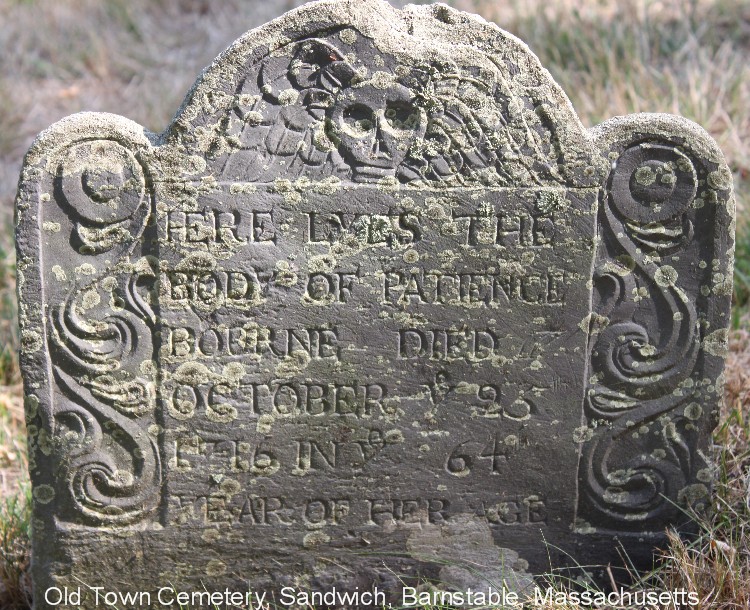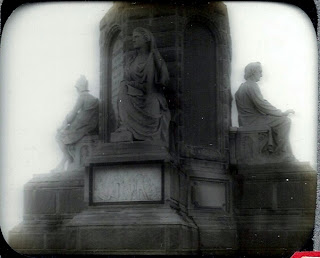My apologies for the length of time without posting. My mother passed away unexpectedly in October and that combined with all the holiday preparations has put my schedule into overdrive. My best wishes for a happy, peaceful and healthy New Year to all my genealogy cousins!
Nathaniel Baker was born 27 March1641/42 in Boston,
Suffolk Co., Mass.,
the eldest child of Francis Baker and his wife Isabel Twining (Boston VR). He
is my 10th great-grandfather on my grandmother Milly (Booth) Rollins’
side of the family.
I have seen other genealogists give his wife as Desire,
maiden name unknown, and also as Desire Gray, daughter of Edward Gray. That
Desire married Nathaniel Southworth in 1671/2 and died in 1690 at age 39, so
the dates don’t match up for her marrying both men.
There is also a Mary Pierce/Peirce/Pearse who married a Nathaniel
Baker ca 1670. She was born Duxbury ca 1645, the daughter of Abraham Pierce (Anderson’s Great Migration Begins). Torrey’s New England Marriages gives Nathaniel’s wife
as Mary (Pierce?) who died in 1691. Mary Pierce’s brother Abraham married
Hannah Baker, Nathaniel’s sister, and as we know our early Cape
ancestors kept things in the family!
Savage's Genealogical
Dictionary does not give a spouse for Nathaniel. "NATHANIEL, Yarmouth,
eldest s. of Francis, had three s. Samuel, b. 29 Oct. Nathaniel, 27 Jan. 1672;
and prob. the other was nam. Silas, says Mr. Otis. Both he and his w. d. Dec.
1691, as Mr. O. assures me."
Nathaniel and his wife raised their three sons in an area of
Yarmouth that
became Dennis.
1. Samuel, born 29 October 1670, Yarmouth, Mass., married
Elizabeth Berry (Yarmouth VR state Samuel, son of Nathanell Baker was 4 years
old on 29 October 1670).
2. Nathaniel, born 29 January 1671/72, Yarmouth, Mass.,
married Elizabeth Baker. (Yarmouth VR state Nathanell Baker son of Nathanell
was 2 years old the 29th of January 1674.)
3. Silas, born 1678, married Deliverance Kelley, a Quaker, and
died in 1752. Seems to be generally accepted Silas was the son of Nathaniel,
but I haven’t seen a primary source.
I descend from Silas who. after being referred to as “weakly”
in 1692, lived another 60 years.
The pamphlet The Baker
Family of Yarmouth,
Descendants of Francis published in 1912 gives his wife as unknown but
lists their three children as Samuel, Nathaniel and Silas. It states that he
and his wife died in December 1691.
Nathaniel Baker’s probate records are located in Barnstable County PR
vol 1; 56. He did not leave a will. An
inventory of the estate of Nathaniel Baker of Yarmouth was taken 10 February 1691/92 by
Jeremiah Jones and Jeremiah Kelley. The real estate listed was a hound and land
and two acres of marsh valued at 18 pounds. The inventory was sworn to in court
by Samuel Baker (his son) on 21 April 1692.
The inventory is difficult to read by other items included
pair of oxen, cows, heifer, calf, two swine, pigs, a mare. An old coop, plow, shovel,
ax and other tools. A gun, horn and powder, iron pot, a compass, an eel pot, churn,
canoes. A cart, trunks, a smoothing iron, aprons, hooks, a pound of whale bone.
Various household items like woolen and linen wheels, blankets, earthen pot. From
the inventory we can see Nathaniel was a farmer and did some fishing/whaling. Perhaps
was a blacksmith as well.
Unfortunately the probate file does not list a wife, so she
must have predeceased him and his son’s names are not given. Mr. Otis stated
that Mary also died in December 1691, but I don’t know a source for that. Eldest
son was to have the house and land. The other two sons were to have eight
pounds with the youngest receiving an extra four pounds because he was “weakly.”
 |
| antique eel pot |


























